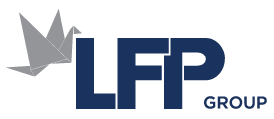AQUACULTURE FISH FARM/ DEVELOPMENT
PHASE 1: Tank/Pond Preparation
The importance of proper designs, construction, setup and the need for involvement of LFP Agri`s experts during the process of setting up aquaculture production units is paramount. Our production units are designed in such a way to allow total control by the Beneficiary/Farmer A good site should therefore have water in quantity and quality needed for the proposed production.
PHASE 2: Stocking
After the pond is prepared, fish fingerlings are stocked at the appropriate density depending on the culture strategy, size of pond, and the size of fingerlings, among others. The fingerlings are properly acclimated and conditioned prior to stocking and weak or diseased fish eliminated. Stocking is usually done in the early morning or late afternoon.
PHASE 3: Feeding
Fish grown in semi-intensive and intensive culture ponds are given supplementary and full artificial feeds, respectively, the former to augment the natural food in the pond, the latter to totally replace the natural organisms in the water as a source of nutrition. An understanding on the natural feeding of fish is important in order to produce: An acceptable and nutritionally adequate diet. A proper feeding regime is adopted to ensure optimal growth and survival of the fish. Tilapia are daytime and surface feeder. It means they eat at the water surface and eat more during the day. At night there is little or no feeding activity.
PHASE 4: Water Management
Water in the pond is kept at certain levels for optimal fish growth. Pond water is not just maintained at a certain depth; its quality must also be kept high to ensure optimal growth of the culture organism. This is particularly important in semi-intensive and intensive culture systems where large amounts of metabolites are continuously excreted into the pond and where excess, unconsumed feeds add to the bottom load and serve to pollute the water.
PHASE 5: Tank/Pond Maintenance
Aside from feeds and water management, the following pond maintenance procedures are carried out: regular application of fertilizers, lime, and pesticides; prevention of entry of predators; monitoring of the stock for growth rate determination as a basis of feeds and water management; and regular pond upkeep and maintenance.
PHASE 6: Harvest
Marketable-size fish are harvested at the end of the culture period by draining the pond and using harvesting nets to catch the fish. Tilapia are harvested using seine nets after the pond water is drained to half-level the night before. Tilapia can also be selectively harvested from ponds by using a large mesh gill net that catches only fish of a certain size. Otherwise, large tilapia can be netted out of smaller containments and the rest left to grow.
PHASE 7: Marketing
The Fish are marketed and sold to local communities, butcheries as well as partner retail outlets. Care is taken to maintain the highest food safety standards. Once harvested, produce can be distributed through the various channels including retailers, open markets and direct to consumers. LFP Agri will collaborate with Third-Party Service providers and major Retailers, who will in-turn create markets for the beneficiaries including linking them up with off-takers and consumers.

HEAD OFFICE:
+27 11 791 1602 |
Cnr Aimee & Rabie Road,
LFP OXFORD CAMPUS:
+27 11 791 1602 |
96 Oxford Street,
Ferndale
LFP BOB CAMPUS:
+27 11 791 1602 |
Cnr Bond Street & Bram Fischer Rd,
LFP CPT CAMPUS:
+27 21 201 1134 |
Sunbel Building, 6th floor,
3 Old Paarl Road, Bellville,
Cape Town, 7530
LFP KZN CAMPUS:
+27 31 941 1468 |
Westville,
Durban, KZN, 3629
